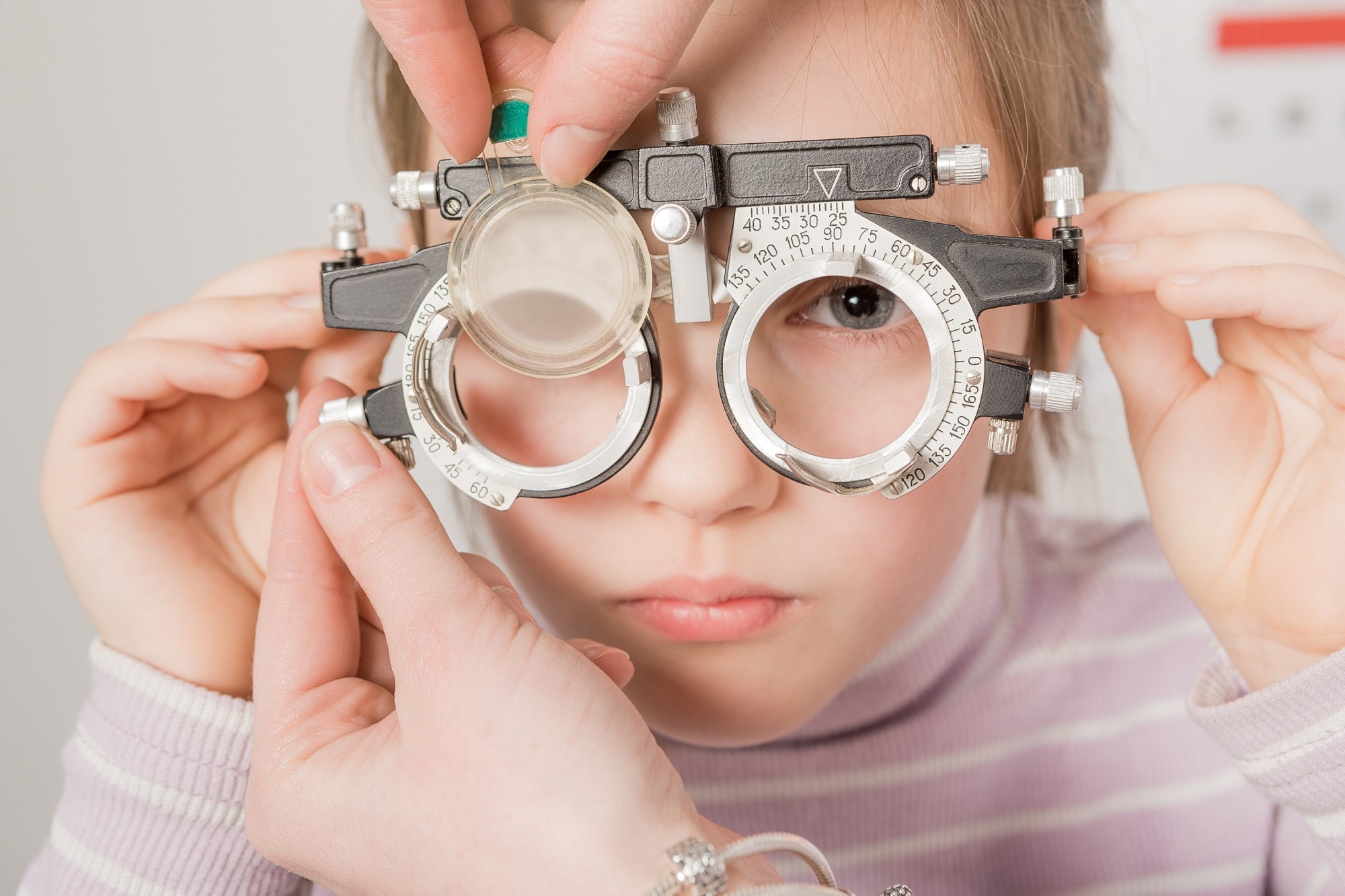New research reveals that reducing air pollution not only improves children’s eyesight but could also play a crucial role in tackling the soaring rates of myopia worldwide.
 Study: Benefits of clean air for school children's vision health. Image credit: Wallenrock/Shutterstock.com
Study: Benefits of clean air for school children's vision health. Image credit: Wallenrock/Shutterstock.com
A recent PNAS Nexus study used a large sample of school-aged children to investigate the potential benefits of cleaner air for vision and to identify the primary factors influencing visual acuity.
Air pollution and myopia
Myopia or short-sightedness has become a significant global public health concern, with prevalence rates reaching 80-90% in school-leavers in East Asia. Well-known risk factors of myopia include intensive screen use, having myopic parents, and other behavioral habits that lower exposure to natural light.
Recent research has shown that children in regions with worse air quality are more likely to have poorer visual health. Air pollution may increase oxidative stress and exacerbate ocular surface inflammation. This suggests that myopia risk may be increased with chronic pollution exposure. However, the direct evidence linking cleaner air and better visual acuity is limited, and the problem is being able to satisfactorily account for confounding influences from other factors that also affect vision.
About the study
Traditional regression models like logistic or linear regression have difficulty making sense of the complex patterns in large health datasets. This problem is solved by automated machine learning (AutoML), which does not require any prior specification of the relationships between variables and can automatically model nonlinear influences and interactions.
This study used an explainable AutoML framework to identify the primary drivers of childhood myopia, evaluate age- and severity-specific variations in risk factor profiles, and quantify the benefits of cleaner air. The sample comprised approximately 30,000 primary, middle, and high school students from Tianjin, China, recruited from March 1, 2021, to December 31, 2023, in Tianjin, China.
School nurses or trained healthcare professionals conducted myopia screening. Each eye's uncorrected visual acuity (UCVA) was measured at 5m, and noncycloplegic autorefractions were also used to determine spherical equivalent refraction, which was part of the myopia diagnosis. Several confounders were considered, and data were collected on academic pressure and schooling characteristics, familial myopia history, lifestyle factors, and environmental factors, including air quality.
Study findings
The average age of the participants was 10.4 years, and 51.9% were male at birth. Most of the sample (84.7%) came from urban areas, with an average prevalence of myopia of 53.2%. Approximately 11.0% of all students slept with lights on, and there was heterogeneity in sleep duration by grade. For example, 4.0% of junior high-school students slept ≥9 hours, while 9.8% of primary school students slept ≥10.
Parental myopia prevalence was 64.5% with one myopic parent. About 79% of the students consumed 4–6 grams of salt per day, and about 82% consumed desserts ≤3 times per week. Median exposure values to 2-year average air pollutants were 33.6 μg m−3 for nitrogen dioxide (NO2) and 38.6 μg m−3 for PM2.5.
Thirty machine learning (ML) models were developed to predict UCVA in the given sample, including parental myopia, school type, nighttime light, NO₂ levels, and PM₂.₅ levels, in order of importance. Attendance at primary school was generally associated with higher UCVA, whereas middle and high school attendance was associated with negative UCVA outcomes.
Similarly, coherent patterns were seen for environmental factors. Greener surroundings were linked to better UCVA; conversely, poorer UCVA was seen in areas with heavier pollution. A key point is that the factors influencing myopia often interact, sometimes offsetting and sometimes amplifying individual impacts. Studying a single factor in isolation can misrepresent its true weight. Other important contributors included sex, sleep duration, homework burden, and sports participation, highlighting that daily behaviors also shaped UCVA outcomes.
On average, primary school children exhibited better vision than senior students. Demographic/genetic influences explained about 81.0% of the total UCVA variation among children with high myopia. In children with less severe myopia, about 12% and 14% of UCVA variation were explained by environmental factors and behavioral habits, respectively. A trend was noted whereby high myopia prevalence increased with age. NO2 was a more influential predictor in less severe myopia. These findings suggest that demographic factors are most important in high myopia, while differences in pollution exposure have a stronger impact on less severe myopia.
Clean air scenarios were created to quantify the potential benefits of improving air quality on UCVA. A marked improvement was noted in UCVA outcomes, with reductions in both NO2 and PM2.5. The average UCVA of the whole population improved by approximately 0.04 units, relative to the current baseline condition. Primary school students benefited the most, with their average UCVA improving by about 0.09 units, roughly double the overall population average; hence, younger students would benefit more from cleaner air.
Conclusions
This study uses an explainable machine learning tool to demonstrate the significant association between air pollution and decreased UCVA, particularly among younger school-age participants. This implies that expanding green spaces, enhancing air quality around schools, and fostering healthy lifestyle practices may safeguard children's visual health.
The authors highlight practical intervention strategies to reduce daily exposure, such as air purifiers in classrooms and establishing clean-air zones near schools.
This study's findings were limited by using self-reported data on lifestyle habits, which can introduce bias. The reliance on a single city may also limit the generalizability of the findings. Ambient air quality was used as a proxy for individual exposure; however, indoor exposures can be very challenging to measure accurately. Future research could conduct more in-depth causal analysis to assess the effectiveness of targeted strategies in managing myopia risk.
Download your PDF copy now!